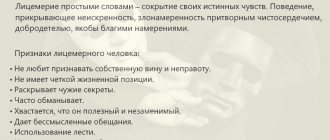What is flow state and how to get into it
Share
VK
Telegram
Recently, the concept of flow state has become increasingly common on the Internet and in real life. What is it, why do people try to enter it and how to do it yourself?
The state of flow has been described more than once in books on psychology and self-development, and discussed at various trainings and courses. That is, the term itself is not new, but recently public figures, coaches and bloggers have been talking more and more about the state of flow.
Flow is a state when a person is so immersed in what he is doing that he has a distorted perception of time and does not notice anything or anyone around him. This extreme focus on the task increases productivity, and this in turn has a positive effect on the final result.
The very first person to propose the idea of the flow state was the Hungarian-born American psychologist Mihaly Csikszentmihalyi. It is worth noting that entering the flow directly depends on the mentality and preferences of the person himself.
An important role here is played by a high interest in what a person is doing and receiving true pleasure from the activity. Thus, you can enter this state both during normal routine tasks, such as cooking or cleaning, and during an interesting job or hobby.
The important thing is that the end result of our actions is not always the main goal. Most often, we enjoy the process itself, which can captivate us for several hours on end. Due to the fact that we are interested in our activities, our brain quickly begins to process information received from the outside.
Increased performance is nothing more than just chemical processes that occur in our brain. While in a state of flow, a person simultaneously produces 5 neurochemicals: dopamine, serotonin, norepinephrine, anandamide and endorphin. This cocktail allows you to fall into a certain euphoric state and even become dependent on it to some extent.
How to enter a state of flow? There are several relatively simple ways to do this.
What is trance
One of the properties of the human psyche is falling into a trance, but not all people have access to it. A change in consciousness usually occurs consciously or with the participation of a specialist. Trance changes the activity of parts of the human brain, focusing attention on internal organization.
During a trance, a person becomes available to visions, memories, even deep ones, which in a normal state a person does not remember, as well as dreams embodied in real form.
Entering a trance on your own allows you to get rid of many problems, such as complexes, old experiences, past traumas, including childhood, depressive disorders. During a trance, the brain begins to filter information, process it and “sort it out.”
Failures in the functioning of the nervous system are easily eliminated by entering a trance state.
Availability and capabilities of the technique
You can enter the alpha state with the help of hypnosis, or on your own.
Of course, if you involve a good psychologist or simply an experienced person in the process, learning goes faster. True, sometimes a person does not have the time or finances to hire a specialist. Considering that the alpha state or half-sleep is natural for the body, you can not put off learning until better times, and learn to use mental reserves on your own. The alpha state allows you to get rid of everything that interferes with your life. In half sleep, a person perceives any suggestions, therefore, being in this state, you can get rid of complexes, fears, and bad habits.
An independent change in the level of consciousness allows you to analyze the true problems of personality development: find out why phobias formed; see the falsity of some beliefs; understand what is truly necessary for happiness.
The benefits of trance states
Psychotherapists use hypnosis to treat many psychosomatic diseases. One type of hypnosis is Ericksonian hypnosis, but its implementation requires the participation of a specialist. But you can independently immerse a person in a trance without the help of a specialist.
While in a trance, the brain begins to activate activity processes in the body, processes information, helps eliminate deep-seated experiences and long-standing stress. During trance, the right hemisphere begins to work actively. The body directs all its resources to relaxation and solving problems at the physiological level, which in real life are not always possible to realize.
Trance allows you to work with long-term stressful conditions, due to which a person feels tired and depressed for a long time, but the roots of this problem are unknown to him.
During trance, a person often receives a solution to many of his problems, insight comes to him, problems are solved by themselves.
Who can learn hypnosis
Any psychologist or psychotherapist can learn hypnosis and other trance techniques. This is confirmed by the fact that many specialists use them in their work.
It is not necessary to have any hypnotic gaze or low voice, the gift of suggestion, etc. It is enough to study these techniques, choose the one that suits you and successfully use it in your work. All comes with experience!
As an example, we can offer you one of the courses on trance techniques at our Academy.
How to prepare
In order to independently enter a trance state, you need to find a suitable place, but it should not be noisy or crowded. It is best that no one interferes with the process or enters the room. Often practicing trance people can enter this state, regardless of the place and time of the ritual, but for beginners it will be difficult at first even in complete solitude.
Before entering a trance, you need to satisfy your physiological needs so as not to be distracted by them in the future. There is no need to go into a trance hungry or vice versa on a full stomach. The condition should be comfortable. Also, you should not start entering while you are sick.
All irritating factors, such as sounds, noises, distracting luminous objects, must be eliminated. The body position should be comfortable and as relaxed as possible.
Escaping reality into a fictional world
All people are like people.
They do something, rejoice when they feel good, and suffer when they feel bad. Today was a good day! But yesterday, not so much. And with each new day we plunge into real life in order to live through all the fuss, realize ourselves, and get from it what we want. And there are others - those who escape reality. They don't care about and don't need real life. This phenomenon is called escapism - when a person replaces real life with an alternative one. Why the phenomenon? Because lately there are more and more people who are running away from reality. A person of any age, from young to old, can suffer from escapism.
These people for the most part lose touch with reality, preferring to be away from it, and yet they are burdened with obligations and are forced to return back. Those who are younger - because their parents are unhappy and pull them out of this state. And those who are older are forced to work to survive.
At the same time, the escape from reality can be different. This article will discuss two types of escapism:
1. People who are subject to illusions and dream of all the benefits of our life. The so-called escape from reality into a fantasy world - where a person has everything, and everything is good for him. Everything works out for him. Life is good. But all this is only an illusion. In reality there is nothing. He does not desire and does not achieve - he draws himself a beautiful illusion and imagines. Meanwhile, life passes by. Fantasies are replaced by other fantasies - that’s all.
Such people are forced to leave their state in the real world in order to provide for themselves, but they do this, as a rule, at a minimal level. For them, illusions are primary, and when they enter the real world, they feel it is angry, joyless and cruel towards them.
2. People who are prone to escape from reality into the virtual world. They act as an antipode to those who live in illusions. They don’t need anything, they don’t dream of benefits. They need not to be touched or disturbed. They love silence, the night and the computer. Of course, nowadays many people are fond of games and very often spend all their free time on the computer. But here we are talking about replacing the real world with a virtual one.
When such a person is forcibly pulled out: they shout, beat, pull out the cord, turn to a psychologist - all this only causes aggression in him, and he begins to hate even more those who interfere with him.
I see this picture more and more often, and the question arises: how to get these people out of their world so that they begin to live an ordinary life and enjoy it. After all, everyone understands that this is not a person’s super skill - it is a problem that interferes with life.
And the problem is purely psychological, and all psychological problems have a cause.
The reason for leaving reality is accurately diagnosed by System-Vector Psychology of Yuri Burlan.
Entry techniques
To enter a trance, there are some techniques that allow the body to adapt quickly and easily in a short period of time. However, they all require significant effort, since it may not work the first time. Entry must be practiced frequently.
- The easiest technique to perform is holotropic breathing. You can perform this either with a quick noisy exhalation or with slow and deep breathing. The number of breaths per minute should be at least 50 if you use the fast intermittent breathing technique. It is best to perform lying on a flat, flat surface, with dim light. During breathing exercises, the body is saturated with oxygen, which leads to a slight change in consciousness, as well as immersion in a trance.
- One way to enter a trance is to use sound. You can use a mantra, which will need to be repeated monotonously, observing a certain tone. The concentration of sensations should be only on sound. Feeling the vibration of the vocal cords and the flow of oxygen into the lungs.
- The technique of monotonous movements is often used. The easiest way is to sit on the floor and swing your body in different directions, slowly and monotonously. This method can be supplemented with the sound method.
- Concentrate on one action or sound. It can be the sound of an hour or drops of water evenly dripping into the sink, for example. You can focus on your own body and try to listen to your heart.
While entering a trance, a person feels lightness and even some kind of floating. Some people feel leaving their body. Reality is blurred, consciousness is dulled. The state resembles a state of half-asleep, when you are not yet completely asleep, but at the same time you are no longer quite in reality. Self-hypnosis is achieved experimentally. The most popular techniques allow you to achieve a trance state after just a few workouts. Some manage to achieve the desired result already in the first session.
Hallucinogens
Food poisoning sucks.
All the valves in your body instantly break down, and you begin to gush for several hours with short breaks for showers. But food poisoning can also cause hallucinations if you eat the wrong mushrooms or berries, for example. But there are naturalists who deliberately eat the wrong plants. This practice goes straight back to ancient times, when our ancestors, due to the lack of other entertainment or as an experiment, tried to eat everything. And one day they realized that some plants had an unusual effect, and they began to use the conditions caused by these leaves and mushrooms in their rituals (I’m sure that someone simply continued to use it purely for personal recreational purposes). The best known members of this class are psilocybin mushrooms, which produce a state similar to an LSD trip. Pelevin in his book “Generation P” described in sufficient detail what happens to a person who eats mushrooms (it all ended with the advertising concept for “Parliament” cigarettes invented by the hero).
“The highest form of self-realization of the fly agaric as a mushroom is an atomic explosion - something like a luminous immaterial body that some advanced mystics acquire. And people are simply an auxiliary life form that the fly agaric uses to achieve its highest goal, just as people use mold to make cheese.”
But while Russians know enough about mushrooms (just in case, I’ll say that psilocybin is included in the list of narcotic drugs), then not so much about vines. I'm talking about ayahuasca - a drink of ancient Indian tribes made from a decoction of a special vine. It was used for mystical rituals associated with changing consciousness and immersion in the secrets of ancestors, as it causes powerful hallucinations. Nowadays, in some places similar rituals are also held for tourists.
If in Peru this drink is considered a national treasure, and UNESCO has included in the World Heritage List special songs of shamans that accompany the use of this potion, then in our country, as in many other countries, ayahuasca is prohibited. In 2022, the artist Maxim Gert, who was planning to smuggle a liter of ayahuasca across the border, was detained - 11.5 years in a maximum security colony.
Meditative music
You can enter a trance using various techniques. One of them is the use of meditative music. Meditative trance music is sold on audio media in specialized stores, it can be found on the Internet, or you can chant the mantra yourself, having previously studied the correct tonality and sound combination.
Music, not only for trance and meditation, in general allows a person to relax and put his feelings in order. It is not without reason that psychologists recommend listening to calm, relaxing music as often as possible, both for adults and children. Classical music has a significant impact on improving the health of the body, normalizing mental processes and balancing a person’s state of mind.
Meditative music is aimed at helping to enter a trance, but it can be used not only solo, but also in combination with other techniques for entering an altered consciousness.
Ways to go into trance yourself
Trance inductions and meditations
If you do not yet know how to enter a trance yourself, use audio recordings of trance inductions and meditations that will help you enter a trance state.
Trancemasters consultants and trainers make these recordings for those taking our hypnosis and generative trance courses. And also for my clients, so that it is easier for them to learn and solve internal problems in a trance.
To enter a trance using trance induction, take the necessary time, find a quiet, calm place where no one will disturb you. Practices can be done sitting or lying down, but it is generally believed that an upright body position is more effective for productive trance work.
Put on your headphones, turn on the recording and simply follow the progress of the practice, discovering and using your abilities to communicate with the unconscious.
Trance meditation by Konstantin Pukhov “Sphere of Breathing”
The sphere of breathing is a meditation for deep connection with Self and opening to the World. Hosted by Konstantin Pukhov.
Meditation by Konstantin Pukhov “Sphere of Breathing”
Trance practice “Interior Design”
Trance “Interior Design” - demonstration from the Ericksonian hypnosis course Trancemasters
Practice of Konstantin Pukhov - Five-point attention. Working with Intention
Konstantin Pukhov - Five-point attention. Intention. Trance practice for self-hypnosis.
A short one-minute meditation from Ivan Goshev
Meditation for one minute to achieve a comfortable state. Simple practice with intention.
Trance practice-meditation by Alisa Shakhunova “Unfreeze your life”
Trance practice-meditation by Alisa Shakhunova “Unfreeze your life”
Please note
You will find more useful meditations and practices in a special section - meditations and practices Trancemasters
Simple practice through breathing
Breathing and breathing practices have been used by people since ancient times to enter a state of trance. Breathing is an unconscious process that we can control consciously to a certain extent. Therefore, the use of breathing can open access to trance. And most importantly, our breath is always with us.
Here's a simple exercise:
- Sit comfortably; if you want, you can close your eyes. Allow your back to straighten and your shoulders to relax and drop. There is no need to do this on purpose, just be curious about how easily it can happen on its own, right now
- Start observing your breathing. Just notice how you inhale and how it is followed by an exhalation after some time. Listen to the pauses between them, what you feel during the pauses
- Feel which is longer, inhale or exhale. Or maybe they are about the same. And it doesn't matter now, just watch. There is no need to change anything about the way you breathe now, just allow yourself to notice what your breathing is like right now.
- Observe your breathing for a while, immersing yourself in sensations, letting go of your usual worries and worries, concentrating your attention on bodily sensations and breathing
- After some time, you may begin to notice that your breathing itself is changing - maybe it deepens and calms down, or maybe it transforms in some other way
- Continue to breathe and gently observe your breathing for at least a minute
- Gently open your eyes and begin to notice what happened to your state while you were in this little breathing trance
Congratulations, you have used one of the classic ways to enter a trance state.
Notice what has changed in your thoughts and feelings after practice? Often people notice that they calm down and relax, although they did not do this on purpose - this happens simply by concentrating on breathing. You can use this method in any situation where you need to calm down and relax.
Your breath is always with you! Just start observing your breathing and sensations!
Square breathing
This practice will allow you to achieve a trance state with a very wide focus of attention and a soft perception of everything that happens. Mastering square breathing is very simple and at the same time useful. Here are the steps for this practice:
- Take a deep breath, and as you exhale, relax, letting go of your body and breath. Some people find it easier to do this with their eyes closed.
- Start by observing your breathing as in the first breathing practice. Remember that you do not need to change anything about the way you breathe, nor do you need to change your breathing pattern on purpose.
- Observe the differences in the length of your inhalation and exhalation, and simply breathe for a few breaths.
- Start paying a little more attention to the moments of pause. There is always a pause when the inhalation has already ended and the exhalation has not yet begun. And vice versa, when you have already exhaled, but have not yet begun to inhale
- Now you simply pay a little more attention to these very moments of pause, simply allowing the inhalation and exhalation to happen as usual. And at this time, with your attention, highlight, explore, reveal the pauses between breathing cycles
- After some time, you will notice that the pauses begin to lengthen. If you want, you can increase them consciously, but a little at a time. The main thing is to breathe comfortably
- As you continue to breathe like this, you may notice that your inhalations, exhalations, and pauses between them become approximately the same.
- This is square breathing: inhale-pause-exhale-pause.
- If you want, you can breathe counting, counting seconds to yourself, just counts or heartbeats: inhale for 1-2-3... pause (1-2-3)... exhale (1-2-3)... pause (1- 2-3). Gradually, you can begin to independently experiment with the length of inhalation, exhalation and pauses between them
- If tension or discomfort arises, or you take too long intervals, just relax and choose a pace and length of inhalation and exhalation that will be comfortable. There is no goal to make breathing intervals long . Gradually the breathing will deepen and lengthen on its own. Just keep your inhalation, exhalation and pauses approximately equal in length.
- As a result, your breathing becomes like a square with equal sides. That’s why this practice is called “square breathing.” Spend some time in it, as long as you feel comfortable.
- When you have enough, gradually reorient yourself to the world around you. It is useful to notice what it was like during this practice, what has changed in your state and perception of the world around you, how your body feels.
I see, I hear, I feel, I realize. We use everything we already have. Recycling loop
Sit down, relax, take time to observe your breathing. You can close your eyes, or you can leave them open, unless they want to close on their own.
We will explore the three spheres of senses - seeing, hearing, feeling, allowing the observation of them to lead us deeper into trance.
Now I see ... - notice three to five things that attract attention around + their qualities (white glass, large office, hard floor). If your eyes are closed, notice the darkness before your eyes, the play of light and shadow, patterns, something else
And now I hear... - three to five sounds around + their qualities (quiet conversation, unusual phone call, rhythmic music)
And now I feel... - three to five sensations in the body - (how my feet are on the ground, how my fingers press buttons, how I breathe)
And when I see what I see, hear what I hear, feel what I feel, I realize that ... - which itself comes as a thought, image, memory or just a picture. (for example, I am aware that I am in the office, I am aware that I am going into a trance).
And you allow this to lead you into a deeper, easier trance...
And with the awareness that has come, you repeat the same chain - I see, I hear, I feel, I realize... And when I realize that I am going deeper into trance, I see (the details of the image that comes on its own), I hear (the sounds associated with it), I feel (what I feel), and when all this is there, I realize that ...
And so on four or five times, each time you repeat see-hear-feel-realize with what comes. This practice is sometimes called a recycling loop . During this practice, you will notice how your internal state changes, what happens to your body and consciousness.
The point here is that we are not changing anything on purpose, but simply giving ourselves time to notice what is already happening . And when our attention is relaxed and open, many things change for the better on their own.










